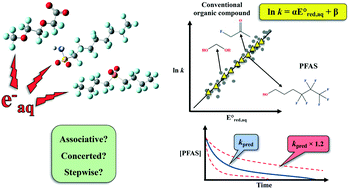科学者たちが、私たちの足元の地中にある炭素の国勢調査を行う新しい方法を開発 – 気候変動管理の重要なツールに Scientists develop a new way to take a census of carbon in the ground under our feet – a crucial tool for managing climate change
2022-03-31 ローレンスバークレー国立研究所(LBNL)

中性子による土壌イメージングでは、土壌や植物の根を乱すことなく、土壌中の炭素(および他の特定の重要元素)の量と分布をすばやく詳細に見ることができます。(Credit: Berkeley Lab)
・この新しい技術では、穴を掘ったり土壌のサンプルを取ったりすることなく、土の中の炭素を、土壌用のX線のように見ることができる。
・植物は、そのライフサイクルの中で、自然に炭素を土に移動させています。そして、土壌中の微生物がこの炭素を有機物に変え、数十年、数百年、あるいはそれ以上の期間にわたって存続させることができる。
・植物と土壌微生物は、地球の炭素循環において重要な役割を担っています。人間の農業は土壌の有機物を枯渇させ、土壌の炭素が膨大に不足し、気候変動の一因にもなっているのです。
・空気中から取り出した炭素を測定するこの新しい方法は、気候変動対策やより環境に優しい農業の開発にとって重要なツールとなることが期待されます。
<関連情報>
- https://newscenter.lbl.gov/2022/03/31/berkeley-lab-team-hunts-for-carbon-in-soil-without-getting-their-hands-dirty/
- https://aip.scitation.org/doi/10.1063/5.0030499
同位体分布の3次元決定のための全デジタル関連粒子画像処理システム An all-digital associated particle imaging system for the 3D determination of isotopic distributions
Mauricio Ayllon Unzueta, Bernhard Ludewigt, Brian Mak, Tanay Tak, and Arun Persaud
American Institute of Physics
Published Online: 14 June 2021
ABSTRACT
Associated particle imaging (API) is a non-destructive nuclear technique for the 3D determination of isotopic distributions. By detecting the alpha particle associated with the emitted neutron in the deuterium–tritium fusion reaction with a position- and time-resolving detector, the direction of the 14.1 MeV neutron and its time of emission can be determined. Employing this method, isotope characteristic gamma rays emitted in inelastic neutron scattering events can be correlated with the neutron interaction location. An API system consisting of a sealed-type neutron generator, gamma detectors, and a position-sensitive alpha detector was designed, constructed, and characterized. The system was tested with common soil elements and shown to be sensitive to 12C, 16O, 28Si, 27Al, and 56Fe. New aspects of our approach are the use of a yttrium–aluminum–perovskite scintillator, using a sapphire window instead of a fiber-optic faceplate for light transport to the photomultiplier, and the all-digital data acquisition system. We present a description of the system with simulations and experimental results that show a position resolution on the alpha detector of 1 mm, a depth resolution using a LaBr3 detector of 6.2 cm, and an angular resolution of 4.5°. Additionally, we present single-element gamma response measurements for the elements mentioned above together with a comparison to Monte Carlo simulations (MCNP6).



